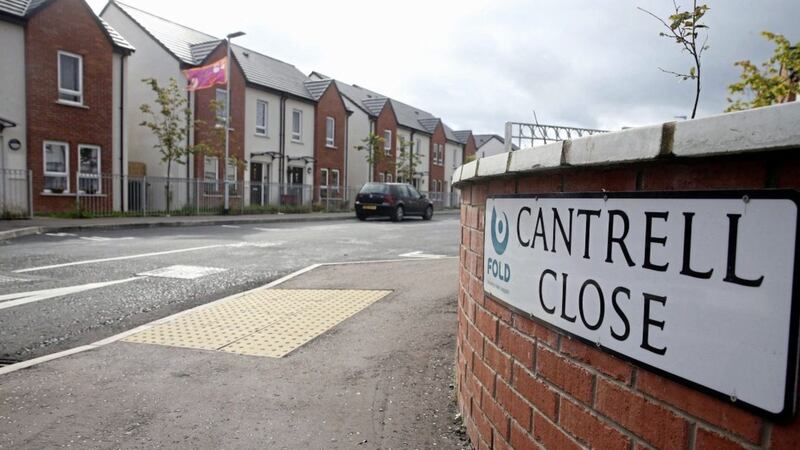Sinn Féin former minister Máirtín Ó Muilleoir has been fair to the PSNI.
When four Catholic families were warned to leave their Cantrell Close homes in his south Belfast constituency last week, Ó Muilleoir explained that police have a duty to pass on any threats as soon as they become aware of them.
Hence the disturbing appearance of officers acting as a postal service for sectarian eviction notices. Hence too, perhaps, the timing of a police visit at midnight, reported by one female resident with a young child.
This might be acceptable if it was followed by a swift and urgent criminal investigation, proportionate to the offence of rendering four innocent families homeless through a suspected act of terrorism.
But of course there is no expectation of that duty being done. In the decade up to 2015 there were almost 4,000 reports of people being forced from their homes, according to figures compiled by news website The Detail. In the same period, there was not one terrorist-related conviction in Northern Ireland for intimidation or issuing threats.
So, for those driven from their homes, their policing service generally begins and ends with the delivery of the threat.
This is governed by a standardised procedure for handling all threats to life, direct or indirect.
Known as Service Instruction 2317, it requires officers to take all reasonable measures within their powers to avoid a risk to life, once they have assessed a threat as real and immediate.
Officers “may” also consider the wider social ramifications of any actions they take and must bear in mind the need for a “proper and adequate” investigation of any offences. However, their first and overriding priority is to uphold the right to life, as enshrined in Article 2 of the Human Rights Act.
The legal basis for Service Instruction 2317 is Section 32(1) of the Police (Northern Ireland) Act 2000 - the law that established the PSNI.
This lists “the general duty of police officers” as protecting life and property, preserving order, preventing the commission of offences and bringing offenders to justice.
This might look legally robust and sound perfectly reasonable but eagle-eyed readers will note it is also very familiar.
Exactly the same basis was given for policing the flag protests in Belfast. Unlawful processions were facilitated on the grounds that a threat to life existed and the general duty of officers was to protect life above preventing crime and ensuring punishment.
In 2014, a resident of the Short Strand in east Belfast won a judicial review to the contrary. The High Court found senior officers were wrong to believe they could not stop the protests and the PSNI had ignored opportunities to bring offenders to justice.
Officers were labouring under a “material misapprehension” of their powers and responsibilities and had “misdirected themselves” accordingly, the judge found.
The ruling was upheld this February by the UK Supreme Court, which added that preventing crime is the PSNI’s “inescapable duty”.
What all this means is that Service Instruction 2317 - reissued this June - is back to front.
In the case of Cantrell Close, the first and overriding priority of the police is to prevent people being intimidated from their homes.
It is not good enough to tick a box marked ‘right to life’ and leave families fleeing their homes at midnight - and that is assuming the threat is real and immediate.
The PSNI says it will not speculate on whether the threat is even credible and “no inference should be drawn from this.”
But we can infer a threat assessment was made - another standardised procedure, based on scoring the reliability of the source and how close that source is to the information.
A threat is meant to score highly on assessment before being passed on, which suggests the PSNI obtained the Cantrell Close warning first or second hand from a usually reliable source.
Why has this information not been promptly traced back to its origins to make arrests? Why were no attempts apparently made to protect residents in their homes or at least to offer them the choice of protection?
A familiar answer would be that the source of the information or, worse still, the source of the threat is being protected first.
There is another possibility. The threat is not particularly credible but it has been passed on as a backside-covering exercise, forcing four families out of their homes.
It is hard to know which of these answers would leave the PSNI in more disgrace.









